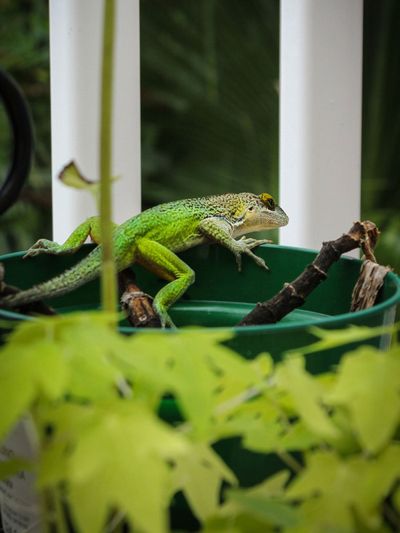Planting wildlife container habitats is an excellent way for those with little space to attract bees, butterflies, and other beneficial insects. You’ll be helping other small wildlife creatures too.
Wildlife Habitat in Pots
In planting a wildlife container habitat, consider the selection of your container. By selecting plants of various sizes and bloom periods, you can craft unique and visually appealing pots. Potted wildlife gardens are only limited by your imagination. Planters such as window boxes, repurposed or upcycled containers, and even raised beds are all ideal for adding color and vibrance to otherwise plain spaces in yards, patios, or apartment balconies. To begin wildlife gardening in containers, pay special attention to the specific needs of plants. All planting containers should have at least one, if not several, drainage holes for excess water to flow freely. In most cases, a high-quality potting mix will provide adequate nutrients for growth of seasonal annual flowers. Lastly, potted wildlife gardens should be situated where they are able to receive ample sunlight. Containers grown in regions with especially hot summer weather may benefit from afternoon shade during the hottest portions of the day. Of course, you can also choose to grow shady wildlife containers if sunlight isn’t an option.
Container Plants for Wildlife
Choosing which container plants for wildlife depends on your preferences. While annual flowers grown from seed are always a popular option, some prefer the planting of perennials or small shrubs. When planting wildlife container habitats, make certain to seek flowers having an abundant source of nectar. This nectar is essential for bees, butterflies, and hummingbirds. Don’t be surprised to find other wildlife visiting your pots – toads, especially, enjoy the cozy, cool comfort of a container when burrowing during the day. They will even help keep pesky insects to a minimum. Lizards, too, can help in the same regard, and the potted environment offers a safe refuge for them as well. Birds enjoy the seeds of many spent flowers, so make sure to keep a few. Wildlife gardening in containers will require some additional care in regard to watering. Oftentimes, the need for irrigation can be greatly reduced by planting native wildflowers. Not only do some wildflowers demonstrate improved tolerance to drought, but many also thrive under less than ideal and difficult soil conditions.
Popular Plants for Potted Wildlife Gardens
Bee BalmEchinaceaLantanaMarigoldNasturtiumPetuniaRudbeckiaSalviaVerbenaDwarf Zinnia
